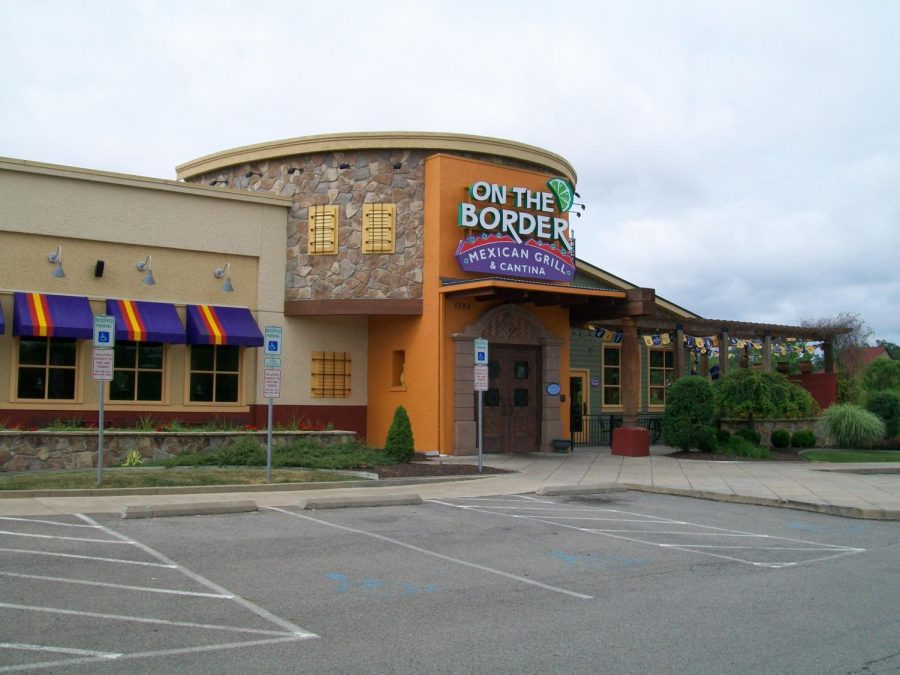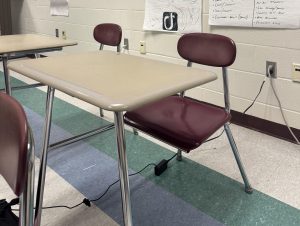A Restaurant’s Red Flags
On The Border, a well-known restaurant chain, can be hit or miss– just like every restaurant. Management is an important part of succeeding in the food industry. “An owner must accept change and listen to feedback from employees in order to make changes that will lead to the betterment of the business,” said Moscatelli.
March 31, 2021
It was six o’clock on a Friday evening. A coupon from the local newspaper had lured my family to eat at a small restaurant on the other side of town. As I pulled into the lot, I noticed a single red truck parked to the side of the small building. There would certainly be no wait. The hostess, who also happened to be the waitress, was eager to seat us– a little too eager. There was not another person inside the place, although “reserved” signs sat upon each open table. The chairs made creaking noises and the table was covered in a sticky film. The menus, tattered and grimy, had grease stains along the edges. I wasn’t usually one to judge a book by its cover, but I wasn’t sure I would leave without obtaining some sort of food poisoning. The waitress and restaurant owner came over to our table, talking up a storm, and bragging about the famous chicken tenders– ironically we had never heard of them.
Having ordered an undercooked fettuccini alfredo for dinner and a bowl of vanilla ice cream for dessert, I left the restaurant. Luckily, I never got food poisoning, but I never went back.
Other students at HB have had similar dining experiences. Teddy Moscatelli ‘21 was visiting Maine. In the mood for Mexican, his family got a table at On the Border, a well-known chain. Unlike the restaurant I had a bad experience with, this one was seemingly reliable. The environment was fun, the walls painted in bright colors, and the place was packed. The waitresses were very kind and willing to give their honest opinions– even going so far as recommending they not order certain dishes. When the time came to order, they agreed upon a table size of nachos and Teddy ordered a burger– which was supposed to be the safe option.
The food came out and before he could even try the food, Teddy knew something was not right. “The order of “TABLE SIZE”E nachos, emphasis on the word table size, came out with eight singular tortilla chips lined up in two rows of four with Mexican blend shredded cheese melted on each individual chip,” said Moscatelli. Not to mention that the burger, which he ordered medium rare, was burnt around the edges and cooked all the way through. The bacon that sat atop the burger was so greasy that it could’ve been heated up in the microwave. “I don’t think I would have even served that food to my dog,” said Moscatelli.
Daniella Allanach ‘23 was sitting around a table with her family after watching a Red Sox game. It was late and the restaurant they ate at, Abe and Louie’s, was an upscale restaurant where both the waitresses and guests dressed nice. Enjoying her meal, her dad suddenly got up from the table, only to come back a few moments later, yelling. A mouse had run across the floor between tables and now was nowhere to be seen. Daniella tucked her legs so they wouldn’t touch the floor. As they looked under the table, the same mouse sat staring at them with wide eyes. Amidst all of the commotion, nobody came to their assistance. “We never told the restaurant about their mice problem. It was late and we wanted to get home,” said Allanach.
So what makes a restaurant bad? Nobody wants an unpleasant experience when they are paying lots of money for food. While some behaviors and incidences may be more common at McDonald’s, sit-down restaurants are held to a higher standard. After fifteen years in the food industry, Kitty Jay– a writer for Mashed.com, knows how to spot a bad restaurant in five minutes or less.
One of the first things on her list of red flags is dirty menus and tables. As I experienced at the Italian restaurant, the menus were unclean and the tables were sticky. The restaurant owner had not focused the time and attention on keeping the place sanitary, so why would he prepare sanitary food? Secondly, being ignored by the staff is a big red flag. When Daniella Allanach’s family saw the mouse, her dad’s yelling should’ve attracted the attention of at least one restaurant personnel.
Of course, a bad restaurant can also be described as having terrible food. Teddy’s burger and nachos, and my undercooked fettuccine alfredo speak for themselves. It’s the owner’s responsibility to take care of the guests, whether indirectly or directly. “Being a restaurant owner means you have to be in tune with both the front-of-house services and the cooking and kitchen services. It’s the owner’s job to make sure that the ingredients that are being bought are appropriate for the dishes they’re serving and that the chefs have an adequate working environment. An owner must also accept change and listen to feedback from employees in order to make changes that will lead to the betterment of the business,” said Moscatelli ‘21.
If you want to avoid bad restaurants, and find more information on finding a great place to eat, you can download the Urban Spoon app. It is the #1 free app for finding restaurants in your area and has many reviews that provide honest dining experience feedback.













